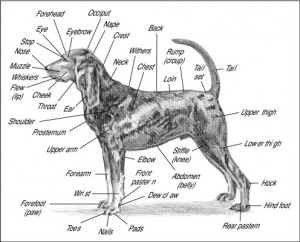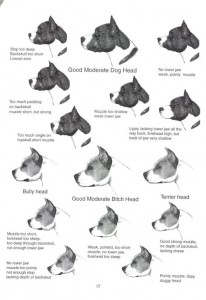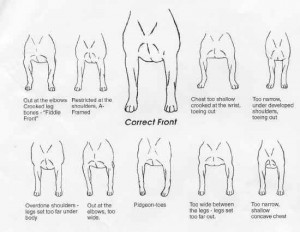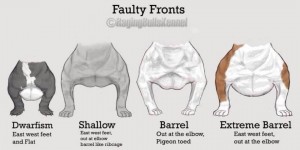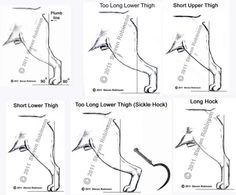Lots of avid pet owners and purchasers have questions about the look of their dog. Pitbull and Bully breeders all over the world should all be striving to produce dogs with correct confirmation to ensure the health and longevity of the breed. There are many differences in breed standards and guidelines from one registry to registry. Some Pitbull’s fit better into the UKC standard and some in the ABKC standards, but overall your XL Pitbull, Standard Pitbull, XL Bully Pitbull and Pocket Pitbull needs to be healthy and correct in every area of their body. To start off it is always good to become familiar with your dogs anatomy.
SKULL – The skull of pitbulls and bullies is large, flat or slightly rounded, deep, and broad between the ears. Viewed from the top, the skull tapers just slightly toward the stop. There is a deep median furrow that diminishes in depth from the stop to the occiput. Cheek muscles are prominent but free of wrinkles.
MUZZLE – The muzzle is broad and deep with a very slight taper from the stop to the nose, and a slight falling away under the eyes. The length of muzzle is shorter than the length of skull, with a ratio of approximately 2:3. The topline of the muzzle is straight. The lower jaw is well developed, wide and deep. Lips are clean and tight.
TEETH – A complete set of evenly spaced, white teeth meeting in a scissors bite.
NOSE – The nose is large with wide, open nostrils. The nose may be any color.
EYES – Eyes are medium size, round and set well apart and low on the skull. All colors are equally acceptable except blue, which is a serious fault. Haw should not be visible.
EARS – Ears are high set and may be natural or cropped without preference. Prick, or flat, wide ears are not desired.
FOREQUARTERS – The shoulder blades are long, wide, muscular, and well laid back. The upper arm is roughly equal in length to the shoulder blade and joins it at an apparent right angle.
The forelegs are strong and muscular. The elbows are set close to the body. Viewed from the front, the forelegs are set moderately wide apart and perpendicular to the ground. The pasterns are short, powerful, straight, and flexible. When viewed in profile, the pasterns are nearly erect.
BODY – The chest is deep, well filled in, and moderately wide with ample room for heart and lungs, but the chest should never be wider than it is deep. The forechest does not extend much beyond the point of shoulder. The ribs extend well back and are well sprung from the spine, then flattening to form a deep body extending to the elbows. The back is strong and firm. The topline inclines very slightly downward from the withers to a broad, muscular, level back. The loin is short, muscular and slightly arched to the top of the croup, but narrower than the rib cage and with a moderate tuck-up. The croup is slightly sloping downward.
HINDQUARTERS – The hindquarters are strong, muscular, and moderately broad. The rump is well filled in on each side of the tail and deep from the pelvis to the crotch. The bone, angulation, and musculature of the hindquarters are in balance with the forequarters. The thighs are well developed with thick, easily discerned muscles. Viewed from the side, the hock joint is well bent and the rear pasterns are well let down and perpendicular to the ground. Viewed from the rear, the rear pasterns are straight and parallel to one another.
FEET – The feet are round, proportionate to the size of the dog, well arched, and tight. Pads are hard, tough, and well cushioned. Dewclaws may be removed. No splayed toes.
TAIL – The tail is set on as a natural extension of the topline, and tapers to a point. When the dog is relaxed, the tail is carried low and extends approximately to the hock. When the dog is moving, the tail is carried level with the backline. When the dog is excited, the tail may be carried in a raised, upright position (challenge tail), but never curled over the back (gay tail).
COAT – The coat is glossy and smooth, close, and moderately stiff to the touch.
SIZE – Height and weight should be in proportion of the body frame.
This is a rough estimate from a standard feeding chart of dry dog food. Keep in mind every brand of dog food is different and you need to feed your dry dog food for the weight desired not the current weight, unless your feeding a puppy in which case you need to feed for the current weight up until a year of age. Here at World’s Finest Pitbull’s we recommend that owners of XL Bullies, XL Pitbull’s, Standard and Pockets do their research on the food they are planning to feed their dog. Also, keep in mind your dog will only look as good as the quality of food you feed it. Less filler is always the best. A balanced fat to protein to carbohydrate ratio is very important. The first 5 ingredients in your dogs food is the most important. They need to be meat based for pitbulls and bullies, unless for dog has allergies in which case you need to consult your vet before making a choice. A great website to check on the rating and breakdown of your food is Dog Food Advisor. The Dog Food Advisor gives unbiased dog food reviews and ratings, which are searchable by brand or star rating. Find the best dry, canned or raw food for your dog at www.dogfoodadvisor.com Here at World’s Finest Pitbull’s we feed Victor Grain Free Ultra 42 to our adults and Victor Active Dog and Puppy Formula to our puppies. We have found that both of these foods meets the needs of our XL pitbull’s and bullies during active workout times and resting winter months. We also believe that out large breed XL Pitbull and XL Bully puppies needs to be switched to adult food at 6 months of age to slow down the growth and protect the hip and knee joints long term.
